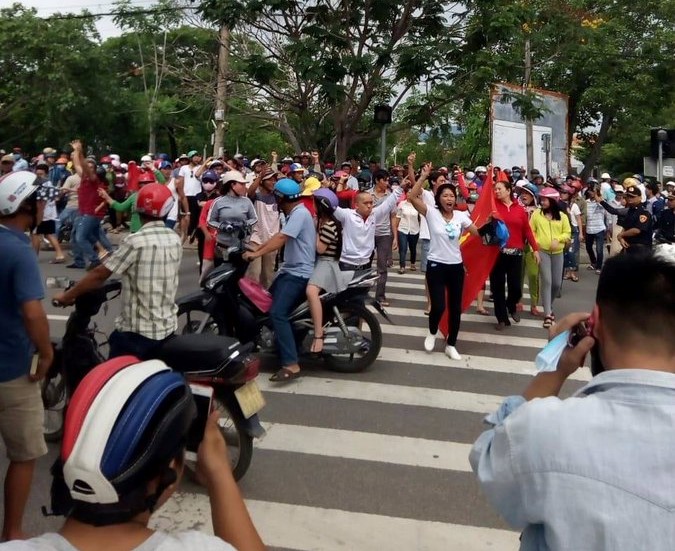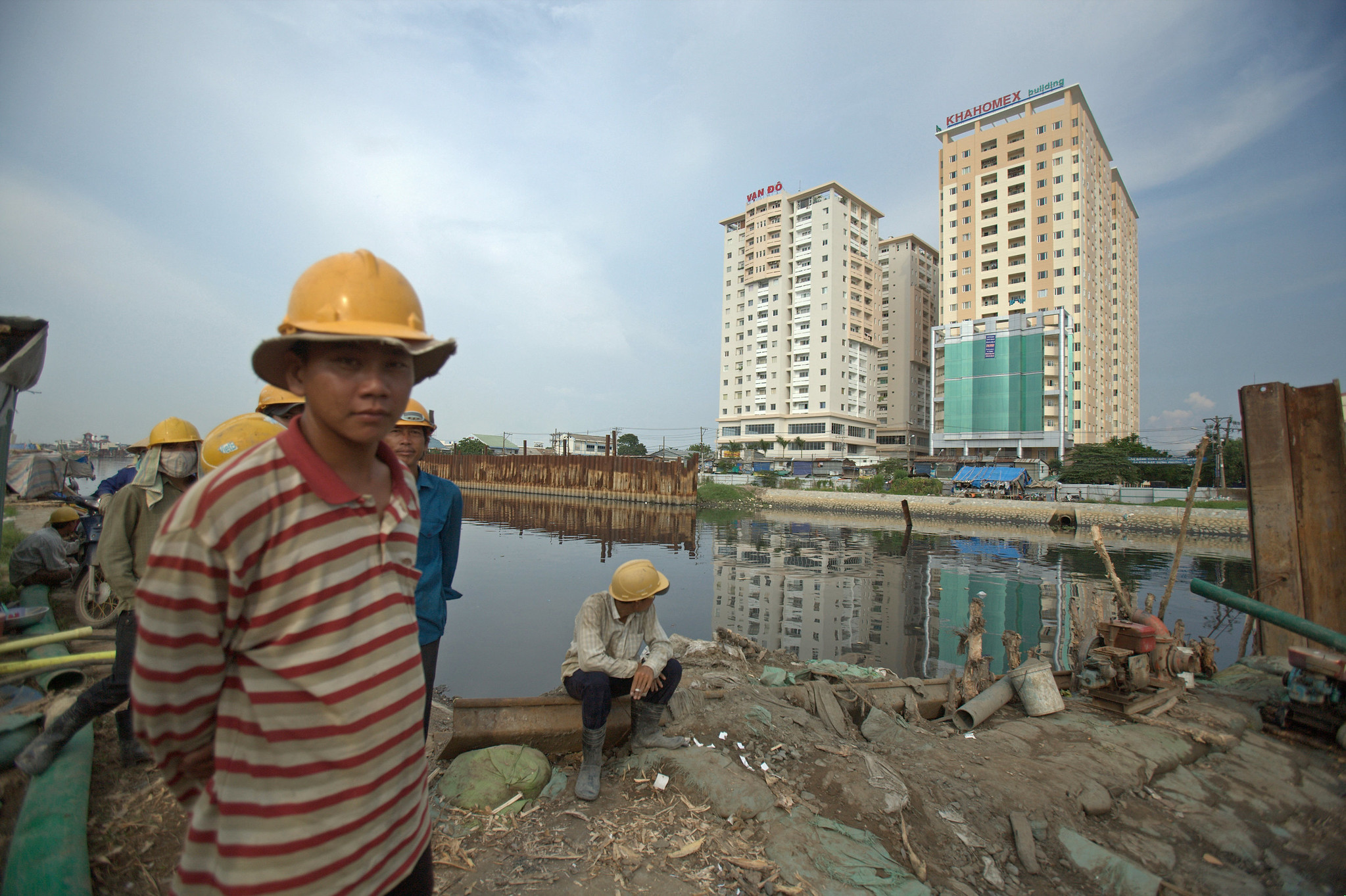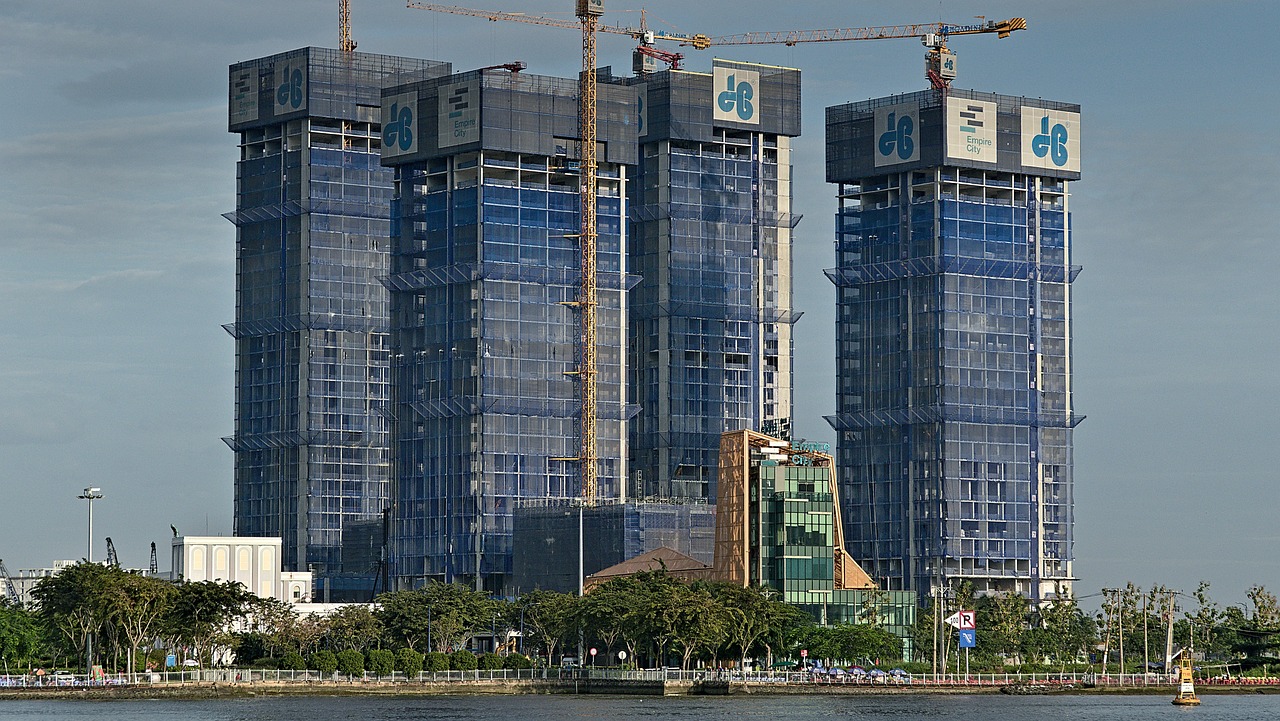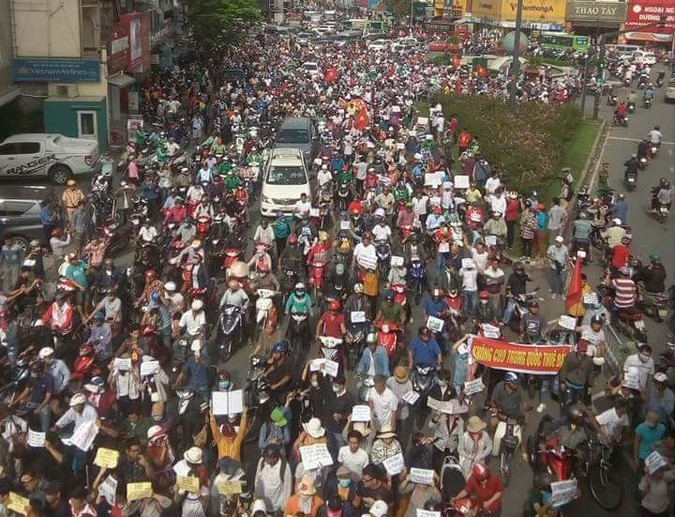In recent times, land disputes and struggles over land seizures have intensified in Vietnam, as large corporations rake in huge profits building factories and homes on stolen land, assisted by local government officials. This in turn has led to intense riots, demonstrations, protests and conflict with the police.
As the crisis of Vietnamese capitalism intensifies, along with rising tension within the Vietnamese Communist Party (VCP), land disputes will become a focal point for the class struggle in the coming epoch. Only a socialist revolution led by the working class in alliance with the peasantry can win a land programme that can genuinely satisfy the needs of the poor in the countryside.
Violent clashes in Vietnam over land disputes
However, this isn’t a recent issue, with notable instances of clashes over land in past decades including the Thai Binh Incident in 1987-1997, the Ethnic Thuong Uprising in 2001, and a skirmish in Doan Van Vuong in 2009. In Van Giang in April 2012, a protest waged by 1,000 families was brutally suppressed by the authorities as their rice fields were confiscated to make way for an $8 billion dollar EcoPark development.
There has been a clear uptick of such incidents in recent years. In 2017, in My Duc, a suburb of Hanoi, residents took 20 cops and local officials hostage and threatened to set them on fire if authorities broke into the building where they were being held. In 2019, hundreds of households were forcibly evicted after a 20-year land dispute in a suburb of Ho Chi Minh City, despite living in those homes for generations.
Violent protests over land rights have broken out around large cities like Hanoi, Ho Chi Minh City (Saigon), Da Nang, amongst others. A clash over the Dom Tam Commune outside of Hanoi in 2018 resulted in villagers holding more than 30 police officers hostage for a week.
 Violent protests over land rights have broken out around large cities like Hanoi, Ho Chi Minh City (Saigon), Da Nang, amongst others / Image: Viet Tan, Twitter
Violent protests over land rights have broken out around large cities like Hanoi, Ho Chi Minh City (Saigon), Da Nang, amongst others / Image: Viet Tan, Twitter
In 2020, thousands of police officers engaged in bloody clashes with dozens of farmers, armed with grenades, firebombs and spears, after military-run telecommunication company, Viettel Group, tried to build a wall through the same land. In September of that year, two brothers were sentenced to death after being convicted for killing two officers, which were the first police deaths in many years, according to a Vietnamese state news website.
These disputes resonate strongly with Vietnamese workers and youth, many of whom emigrate into the large cities for work and school, and have friends and family in the countryside. A lot of people could very easily imagine themselves battling government officials for their own land. Notably, 70 percent of all complaints to the National Assembly of Vietnam are about land disputes, specifically land clearances and compensation, and a quarter of all Vietnamese in a 2016 poll expressed personal concerns over land disputes.
In well-publicised land dispute cases, the farmers fighting the state often gain cult hero status, with hugely sympathetic online responses that occasionally bubble over into small-scale protests and demonstrations. In the aftermath of the recent Dom Tam case, authorities had to crack down heavily on sympathetic social media responses, and three activists were arrested.
Commentators say that these conflicts are one of a few issues that turn quickly into widespread social unrest, disrupting profits and testing the government's legitimacy.
Return to capitalism inflames land disputes
The enormity of Vietnam’s land question and the suffering of small farmers today bear little resemblance to the past, when the country was under a planned economy, upon which the present VCP regime was originally founded.
The Vietnamese constitution states that all land belongs to the people and is managed by the government. As such, the government does not recognise private land ownership. Instead, ‘Land Use Rights’ are given out by the state which allows residences to possess and use the land.
These policies were brought into being as the VCP (despite the Stalinist deformations of the regime) swept away US imperialism and abolished capitalism and landlordism in all of Vietnam in 1975, and liberated scores of Vietnamese peasants from the domination of their landlords.
This has changed, thanks to the VCP regime’s own initiative to restore capitalism. Since 1986, the party introduced measures, in a process known as Đổi Mới, that privatised a large portion of the formerly state-owned economy, placing Vietnamese society under the sway of the anarchic market, private property, and the profit motive.
Although the legal terms around land ownership remain unchanged, the market economy meant that “Land Use Rights” also became commodities that can be bought and sold, which effectively means private land ownership now exists in Vietnam.
 The market economy meant that “Land Use Rights” also became commodities that can be bought and sold / Image: World Bank Photo Collection, Flickr
The market economy meant that “Land Use Rights” also became commodities that can be bought and sold / Image: World Bank Photo Collection, Flickr
For example, in 1993, the government broke up farmers’ collectives and gave them to individual farmers for 20-year usage, representing a pivot away from the collectivisation policy of the past period. With the commodification of the land, disputes and evictions have become more and more common, leading to riots, protest, and widespread anger among the public.
As land prices have skyrocketed, there have been many forcible evictions of families living on and using the land by local governments, who then sell it to investors. This becomes even more vicious when dealing with marginalised ethnic minorities, who routinely have their land stolen while also facing religious oppression and the banning of their traditional practices.
Rather than administering the land on behalf of the workers’ and peasants, the Vietnamese regime actively aids and abets the ruling class to make profit at the expense of the masses. This is especially true when it comes to land.
In 2007, a local government reportedly engaged in widespread seizure of residential farming land, forcing hundreds of residents out in a village outside Da Nang City. It was originally confiscated to be leased to eco-resort company, Sunland, before being auctioned to private (wealthy) individuals.
And in a high-profile 2018 case, a prominent real estate developer was convicted, along with 21 state officials, of buying at least 21 public properties, including public houses and public lots, at below market rates between 2002 and 2017 in Da Nang City, leading to state losses of $861 million dollars US. In other cases, officials look the other way while landowners fight a losing battle with companies.
‘Communist State’ in the interest of Big Business
Much of the feverish rush for land is due to pressures in the world market. Domestic and foreign investors continue to flood into the real estate market to make a profit. Large numbers of international multinational companies, like Nike, Adidas, and Samsung, have moved into Vietnam to escape the Chinese-US trade tensions while inflation worldwide is at historic highs.
At the same time, a larger Vietnamese middle class is purchasing apartments and houses. All this has pushed up demand for land to historic highs. Rent increased by 90 percent in HCMC over three years from 2017 to 2020. In early 2019, real estate was the third largest sector for receiving Foreign Direct Investment (FDI), from China, Japan, Hong Kong, South Korea and Thailand for a total of US$1.1 billion.
 Much of the feverish rush for land is due to pressures in the world market / Image: Pixabay
Much of the feverish rush for land is due to pressures in the world market / Image: Pixabay
To keep appealing to these investors, the VCP has to offer these companies land at low price, leading to small and often unfair compensation for inhabitants, when compensation is given at all. Multi-billion dollar Vietnamese conglomerates like Vingroup, Hoang Anh Gia Lai Group, and Hoa Phat Group, gained their wealth by building real estate projects on confiscated land purchased at bargain rates.
Hoang Anh Gia Lai Group obtained huge amounts of land in Ho Chi Minh City between 2012 and 2016 at below market rates for its real estate projects. In 2016, Vingroup’s land deals came under scrutiny when it was reported they received prime land and permission to ignore zoning laws from the Hanoi’s People Committee in the centre of Hanoi, from the privatisation of a state-owned fairground company.
And in 2008, a land dispute erupted in Hoa Nam province over the construction of an industrial park financed partly by Hoa Phat Group, where land owners weren’t consulted and were given miniscule compensation.
With rising sea levels set to eat away more and more Vietnamese land, making land even more unaffordable, exploitation, corruption and oppression will become even more intense.
Only genuine socialism can resolve the land question
Corruption is part and parcel of the capitalist system, as is collaboration between the state and the ruling class.
In a world dominated by the market and an existential need for profit, multinational companies and banks habitually buy influence with the ruling class to serve them at the expense of the poor, working class and youth. And there will always be self-serving politicians willing to cream off some of the funds to enrich themselves.
It is a tragic consequence of capitalist restoration, directed by the VCP regime, that the great accomplishments of the Vietnamese workers’ and peasants over the land question are being undone. The fact is: you can’t control what you don’t own. Until the Vietnamese working class take these productive forces back into their own hands, managed according to a rational, democratic plan from below, the ruling class will drag more and more land into its clutches.
The masses must rediscover their revolutionary traditions, overthrow the capitalist parasites and their state lackeys, and establish a socialist regime on the basis of genuine workers’ democracy.

